Children’s book designer Vida Kelly has worked with Freya Blackwood at various times throughout Freya’s career as an illustrator. This wonderful interview is part of our ‘Across the Ditch’ series.
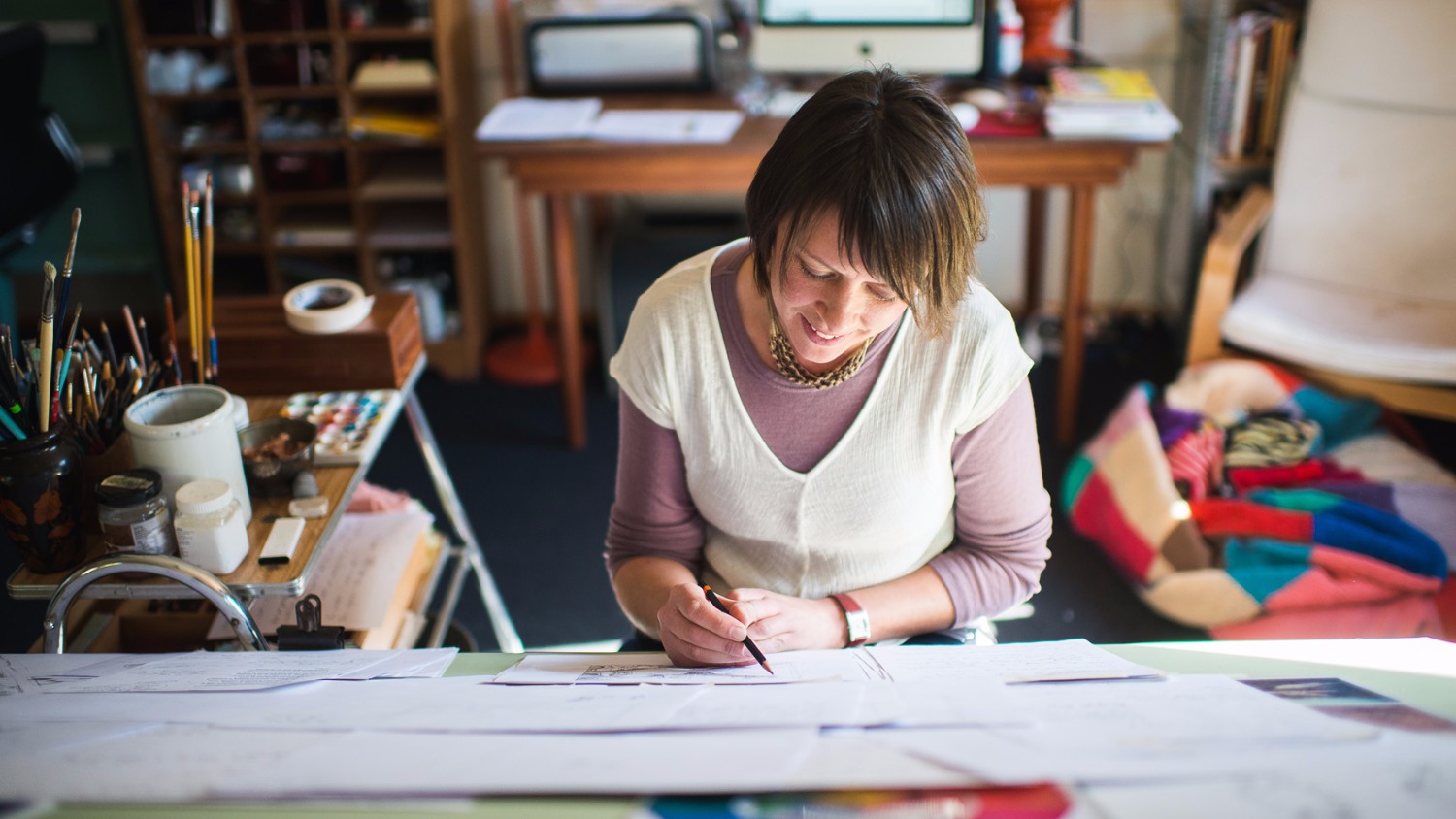
Freya Blackwood is a multi award-winning children’s author and illustrator. Her first picture book Two Summers won at the Children’s Book Council of Australia (CBCA) in 2003 and she has gone from strength to strength ever since, creating over 26 picture books. She received the prestigious Kate Greenaway medal in 2010 for Harry and Hopper and she has won awards from the CBCA no less than 10 times. She lives in Orange, Australia with her daughter Ivy, her whippet Pivot, her cat Dot and her soon-to-be-famous rabbit, Quartz, the star of her latest book The Great Rabbit Chase, out this month, published by Scholastic Australia.
What kind of working environment do you have?
My studio is in my backyard, next to the chicken coop, which sadly has no chickens living in it at the moment. My studio is really just a big shed, but I love the smell and feel of it (except when I’ve left a cup of tea in there for a very long time). It’s my space, and can be any level of messy and I feel completely at ease in there. In winter I can wear my dressing gown and ugg boots to work.
Do you often have to work on more than one book at a time and is it hard to switch focus?
I usually work on just the one book at a time, as I find it much too hard to swap between jobs. I get quite engrossed in the world of a story and swapping between worlds is far too confusing for me! Sometimes, however, I’ll do the storyboarding for a new job or cover for an old job while waiting for feedback on another.
I always enjoy the characters in your books and their interactions with each other. I know it can be hard to keep characters looking consistent from page to page and I wondered how you managed that so successfully?
Hmm, I don’t know about my success in drawing consistent characters. I know that in Maudie and Bear, Maudie was based largely on my own daughter and because the job took quite a while to complete, Maudie grew as my daughter grew! Generally, however, as you work on a set of illustrations for a story, the elements of the illustrations (the world, the colours, the feel and the characters) develop as a unit, and you develop a memory for the look each character has. I guess my drawings of people are also fairly simple and generic and could be anyone until their hair and clothes are added, so a lot of it is achieved in the additions to that figure.
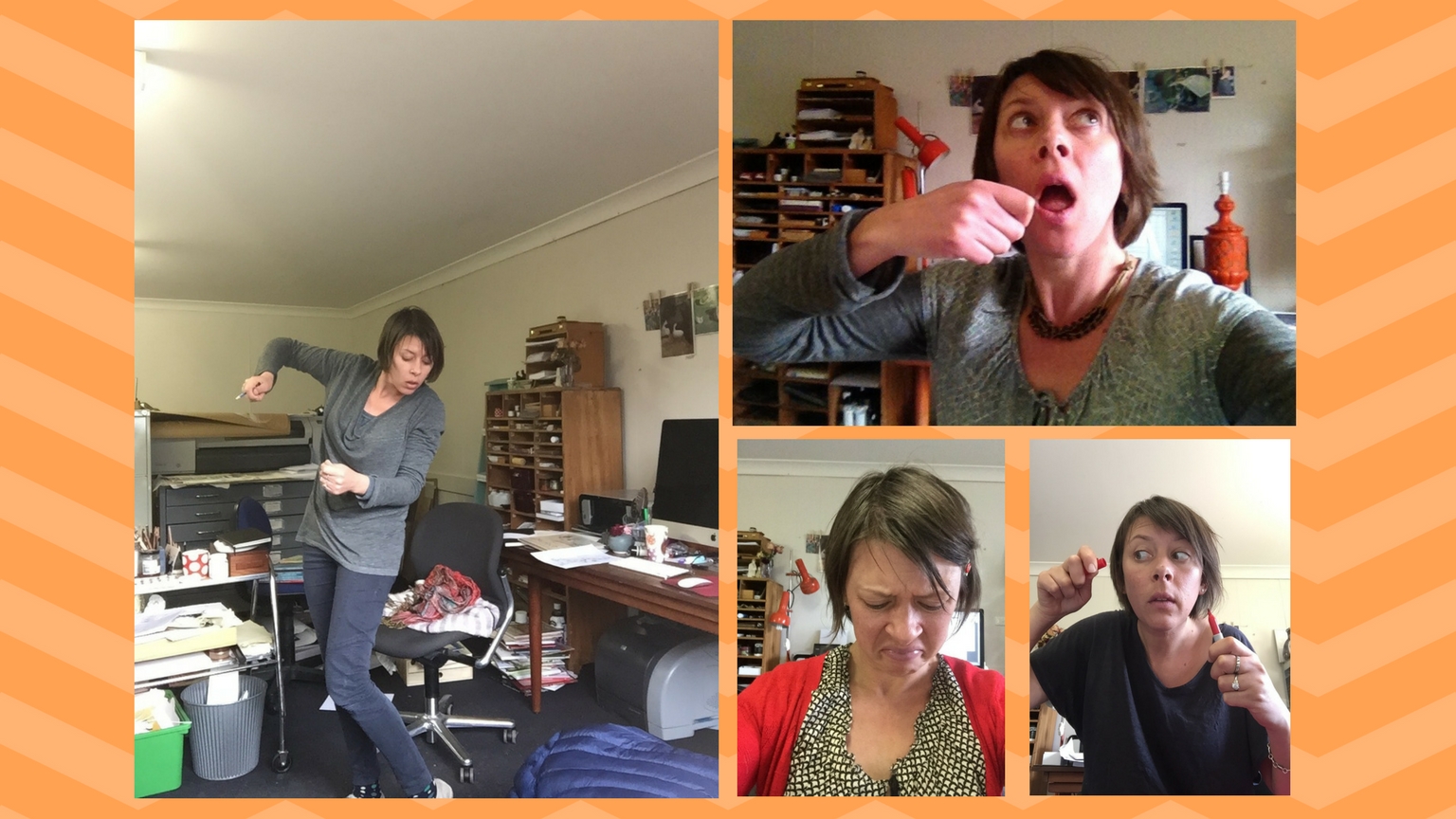
Also all the characters in your books seem like actual people, and their body language is beautifully observed. For example in Molly and Mae you show the struggles of friendship between two young girls so well. How often do you use real models for reference and how much is from memory?
I really love drawing and creating characters. I usually just draw figures from memory, unless the angle I’m drawing from is difficult. So I do have an odd collection of photos of Ivy or myself in various positions, or photos of my own face to help achieve an unusual expression. Often I don’t have an exact position or posture in mind when I’m drawing a character. I’ll start with very basic gesture lines to see if it feels right for the character and the moment. I’ll keep trying lines in different positions until I discover what looks right.
I do spend a lot of time sitting and imagining how characters must feel and how they’d be standing or sitting. I suspect I also pull lots of faces as I try to work out what their faces would be doing.
I know you worked at Weta workshop when you lived in Wellington and also were involved in film production. I often think creating picture books is a bit like a piece of animation. How much do you think your film work helped your ability to tell a good story through picture books?
I’ve always thought picture books are like static films; just smaller, simpler to produce and contained between covers. In the same way that you enter the world of a film when you sit and begin to watch it, you enter the book world by opening the book cover, and if planned well, you’re introduced to the tone of the story, the characters and the world, just like a good film.
I do think I carried some definite film inspiration to book illustration. I often like zooming in from afar to introduce a story’s setting, and moving between angles to reveal the story in the best possible way. There’s a similarity between film and picture books in the pacing, and the use of tension and space. I like to find different ways of depicting movement and time passing within a page, and often these feel quite filmic. I briefly studied production design, and really enjoy designing the world of the story in the same way I’d design a film.
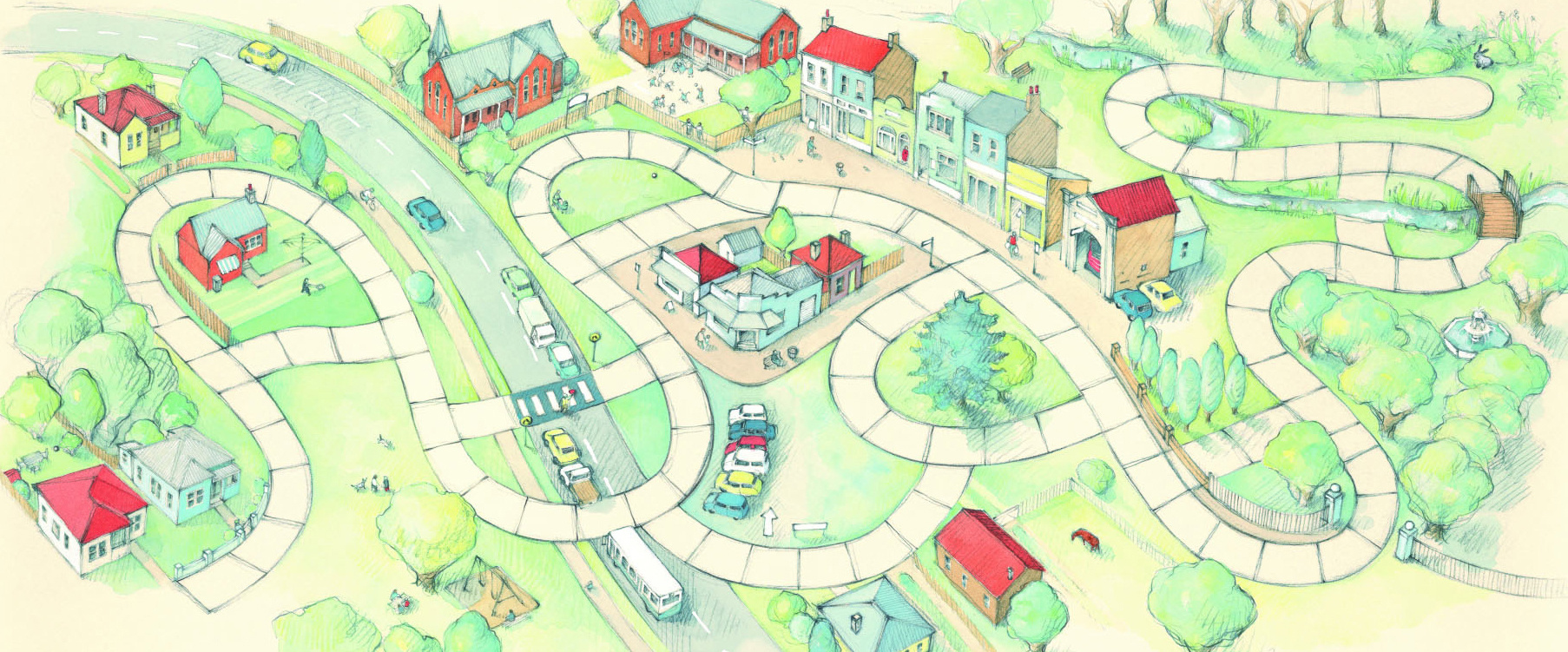
You have such a good eye for layout, which makes my job as a designer very easy! I think you treat each book very individually and create a look appropriate to it. One of my favourites is Maudie and Bear and the way you mix panels and full bleed illustrations – it was a clever way to show a lot on each spread without it being cluttered.
When you receive a new text to illustrate, how quickly does the approach you are going to take come to you? Are there any books which you found particularly challenging?
I’m thrilled that you feel this way about the books I’ve illustrated! Developing an individual approach that suits the story is a major part of what I love about picture book illustration. I like the challenge of finding an aesthetic and a set of aesthetic rules to work by for each book. Once this is in place, it’s easier to solve individual pages.
Some books are easier than others, for instance Molly & Mae, being set on a train platform and train, suited a landscape format and strong horizontals. Sometimes the solution is obvious and comes to me quickly, or intuitively. Other times, despite all attempts, nothing concrete comes to me at all, and the book doesn’t hold together as well as others.
I am looking forward to seeing your new book The Great Rabbit Chase out this month. Will this be your second book which you have written as well as illustrated? Your first (Ivy Loves to Give) was based on your daughter. Do you find being around children your main inspiration for stories? Is this book based on a real event too?
Yes, The Great Rabbit Chase is the second book I have written, loosely based on our own rabbit and the people in our little community. My life has been very child and family focused over the past 10 years and so inspiration has mostly come from my daughter, our family friends and my own childhood. This story was based on ongoing issues with our rabbit escaping, and the hilarious attempts to catch it, and the people who often joined in to help. It morphed from that idea into a story about slowing down and enjoying the people and places in our lives.
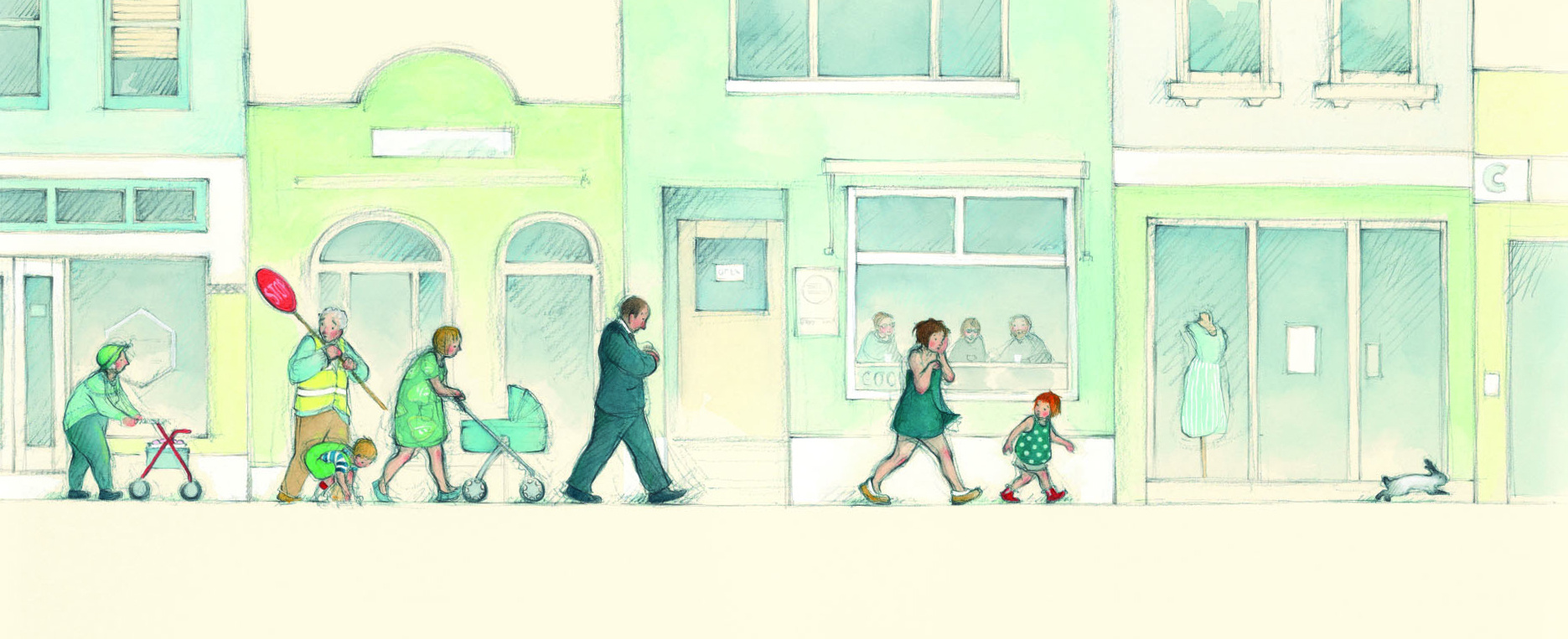
Do you enjoy the challenge of writing and being the sole creator? I wonder if you found it more flexible – you could, for example, take out words that you might feel are unnecessary once you have developed the illustrations. Or does it make it harder – having so much freedom?
It was a very different experience, scarier because I was solely responsible for the content, but lovely because more of myself found its way into the book. I’ve illustrated many books, but none have felt like the sort of book I imagined I’d create when I first started out, and this book feels like I’m getting closer. I always develop an attachment to the story and the characters, but I think that connection was a little stronger with this book. I did enjoy the freedom, and the ownership, but I still love illustrating other peoples’ stories. They bring varied and unique concepts, and the challenge to develop visuals for someone else’s story is exciting.
You have tackled some darker situations in books like Look! A Book! and Harry and Hopper. And you also work on books which are much lighter like Perfect. Do you have a particular leaning to either type, or do you enjoy a balance?
I really love the balance of both types of books. I’d be very depressed if I only illustrated the darker stories, and perhaps a little bored if I only illustrated the lighter subject matters. I’ve found it funny to watch how my reaction to one book will affect the style of the next book. After finishing the work for The Treasure Box, I was determined to never use paynes grey and raw umber watercolour ever again, and keep well away from anything delicate and fine, so the next book, Banjo & Ruby Red, used bright oil paints and rough wild black lines. The balance is very necessary for my sanity.
I’d be very depressed if I only illustrated the darker stories, and perhaps a little bored if I only illustrated the lighter subject matters.
One of the things I really appreciate seeing (along with many other parents I am sure) is the background mess homes in your books often have. Do you get comments (and thanks!) about this from other readers?
Yes! I have often heard from mothers who appreciate the mess and clutter. It’s quite an honour to be able to reassure people that they’re doing just fine in life. There’s no fun in perfection, but there is fun in the honesty I can convey in a picture book. I think we love to discover those slightly embarrassing little truths about ourselves aren’t unique to us. From the household mess, the detail in a character’s awkward expression, or clothing, or their slightly ungainly posture, or their reaction to a situation.
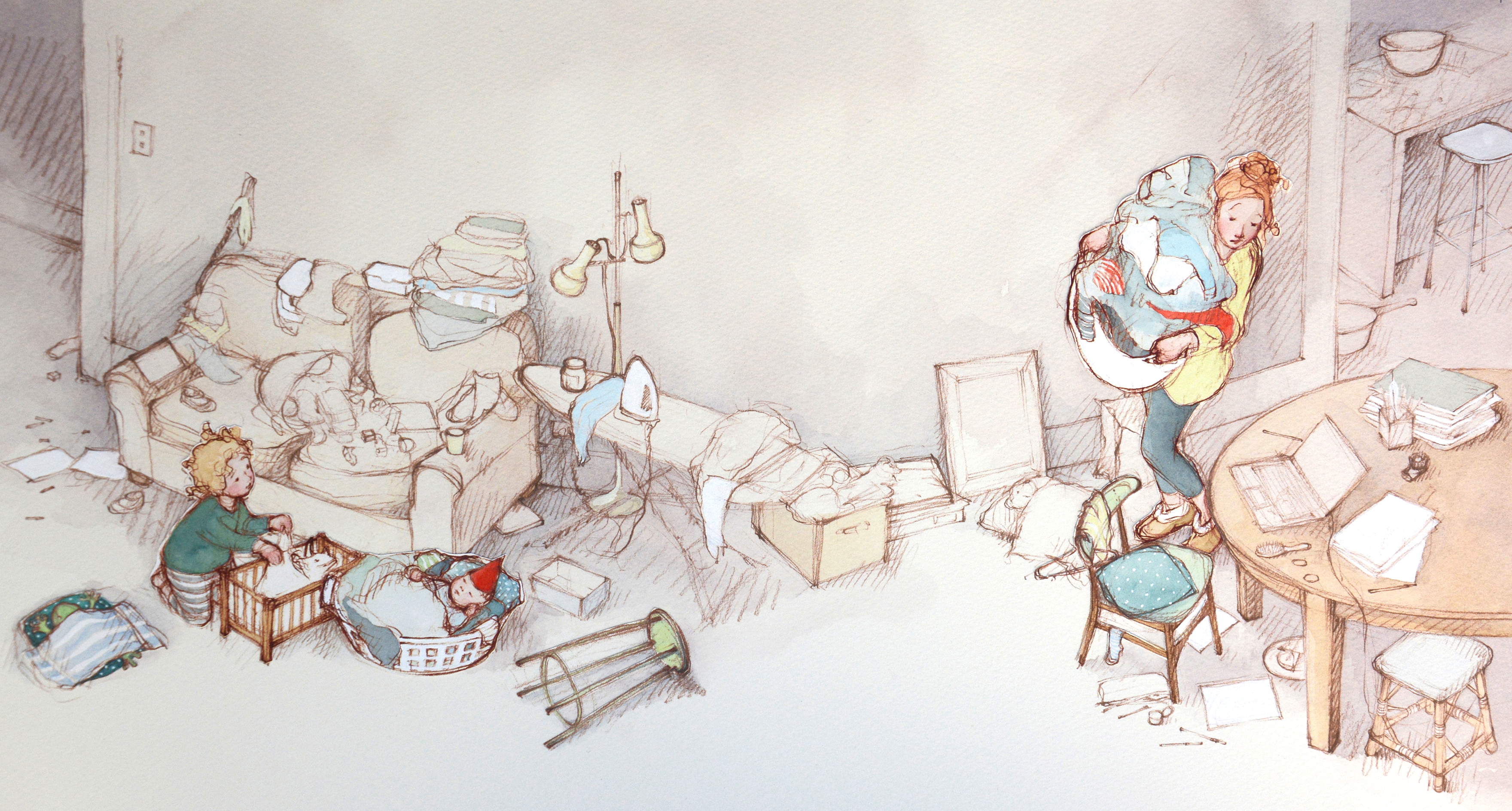
Continuing on that theme, one of my favourite books of yours is Hattie Helps Out where you have the exhausted mother accidentally falling asleep when she was meant to be tidying for a party. Her tired, crumpled face when she wakes up, and discovers that Hattie had done all of the preparations herself, is wonderful. There are plenty of other great adult characters in that book. Do you enjoy drawing grown-ups as much as children?
Hmm. I did enjoy drawing the grown-ups in Hattie Helps Out. Those with strong personalities are fun. But generally I seem to have placed grown-ups in the same category as furniture! Children are infinitely more exciting and appealing.
Do you have favourite books that you remember from your childhood which have inspired your journey into picture books?
The books we had as children that I remember vividly were Where The Wild Things Are (obviously!), The House that Beebo Built, Burglar Bill (definitely!) and a wacky book by Halfdan Rasmussen called Hocus Pocus – Nonsense Rhymes.
And which contemporary illustrators do you admire today?
I love Lizbeth Zwerger’s work, and that by Armin Greder, Joel Stewart, Helen Oxenbury and Eva Errikson.
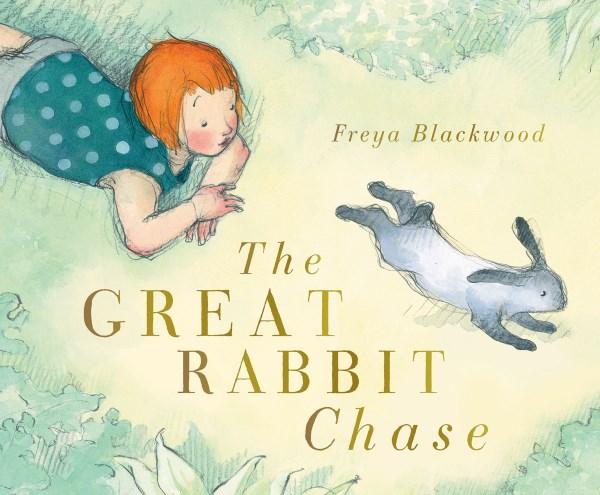
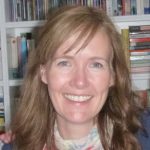
Vida Kelly
Vida Kelly is an art director and designer who specialises in children’s books for local and international publishers. She is originally from the UK where she worked for several publishing companies before settling in NZ with her husband Luke, also a designer. They live on the Kapiti Coast with their three children.



